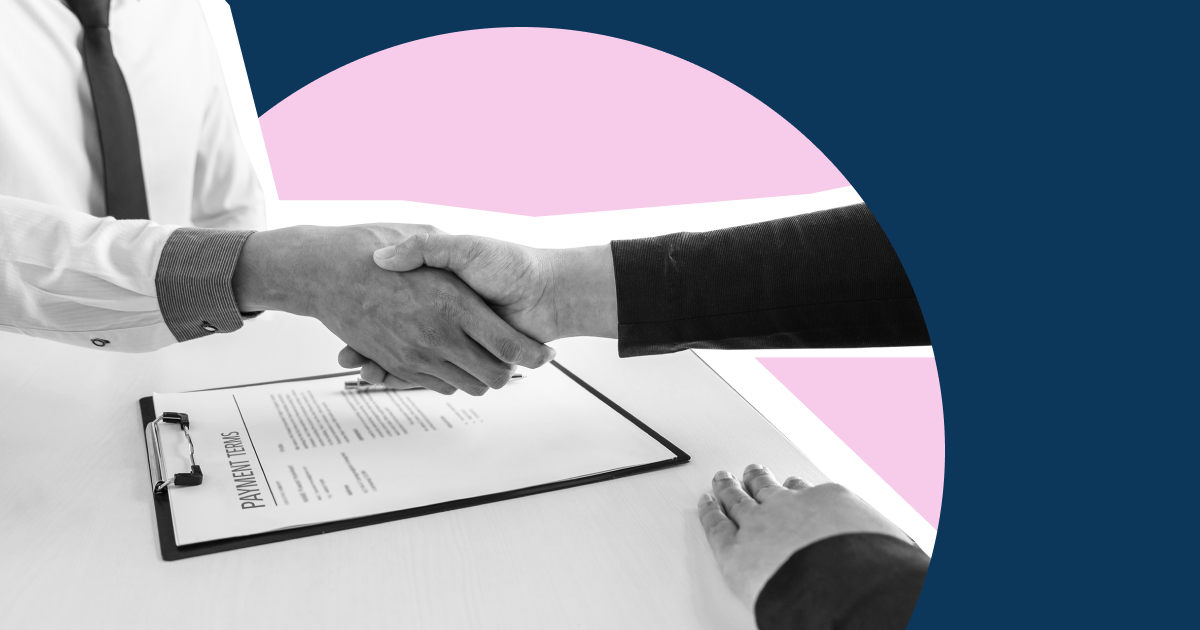Summary
Balance sheets are crucial to running a business successfully. A balance sheet is a snapshot of how well a business is doing at any given time, containing valuable information and insights that can be used to analyse a company’s financial health and shape decisions aimed at improving its financial management. Balance sheets are especially important for small businesses and start-ups because they serve as indicators of growth or decline, thereby helping business owners make the right moves to grow their business.
So, how to create a balance sheet? Read on to find out. This article also tackles other important questions, such as why companies need a balance sheet, what are the common mistakes to avoid while preparing a balance sheet, and what is the balance sheet formula. But first off, what is a balance sheet?
What is a Balance Sheet?
A balance sheet is a statement or summary of a company’s finances, specifically its assets, liabilities, and shareholders’ equity. In simple terms, assets are what a business owns, liabilities are what it owes, and equity is the investment made in the business (more on this later).
In a typical example of a balance sheet, there are two sections – the assets make up one section and the liabilities and shareholders’ equity together make up the other. This is because a business balance sheet follows a standard formula. It is ‘Assets = Liabilities + Shareholders’ Equity’. From this equation, it can be understood that a balance sheet must always balance. This means, a company’s assets must be the combined value of its liabilities and equity. If the two sections don’t add up, that means there is an error somewhere.

Companies typically prepare their balance sheets on a monthly or quarterly basis. This helps them keep a close eye on their finances and regularly review their performance.
Balance sheet versus income statement versus cash flow statement
Apart from balance sheets, businesses also prepare periodic income statements and cash flow statements. Although all three serve as indicators of a company’s financial health at a given time, they have different purposes.
While a balance sheet records assets, liabilities, and equity, an income statement is a summary of a company’s income (revenue) and expenses. Unlike a balance sheet that indicates the total value of a business at a given time, an income statement shows whether the company has made a profit or a loss during a specific period. By reading its income statements, a company can, for example, find out if the prices of goods have increased or declined, or if sales have gone up or down. An income statement is also called a profit and loss statement.
Then there is the cash flow statement, which summarises the movement of cash within a business for a particular period. It records cash flow from three types of activities:
- Operations, such as revenue from sales and payment of salaries, taxes, utilities, etc.
- Investment, such as the sale or purchase of assets, taking or paying of a loan, etc.
- Financing, such as cash paid to shareholders or cash received from investors, etc.
While balance sheets and income statements record both cash and non-cash transactions (gains or losses from investment, depreciation, etc), cash flow statements only deal with cash transactions. By recording all of a company’s cash movements, a cash flow statement helps the business owner budget better.
What’s on a balance sheet?
As already mentioned, a balance sheet has three components:
1. Assets
What is an asset? Any item of value owned by a business is called an asset. An asset can be tangible or intangible. Tangible assets are physical objects (plants, equipment, inventory) while intangible assets are non-physical items of value (trademarks, patents, goodwill). However, on a balance sheet, assets are categorised as current assets and non-current assets, with each category further divided into sub-categories.

Current assets are assets that can be converted into cash in the short term, which is typically a year. They can be broken down further into:
- Cash, including cheques and the money in a company’s bank account
- Accounts receivable, or money owed by clients that is expected to be paid in the short term
- Inventory, which includes finished goods, raw material, and equipment
- Prepaid expenses, such as rent and insurance
- Marketable securities, which are investments that can be sold, such as stocks and bonds.
Non-current assets – also called long-term assets – are items of value that aren’t expected to be sold and bring in cash within a year. These include fixed assets such as property, machinery, and equipment as well as intangibles such as trademarks, copyright, patents, and licences.
2. Liabilities
Anything a business owes is a liability. As in the case of assets, liabilities are categorised as:
- Current liabilities: These are short-term liabilities to be paid within a year usually, such as utility bills, rent, insurance, taxes, and accounts payable (money owed to suppliers).
- Non-current liabilities: These are liabilities that don’t have to be paid within a year, such as long-term loans.
3. Shareholder’s equity
As the name suggests, shareholders’ equity is what belongs to a company’s shareholders. In the case of a small business with a single owner, it is simply called owner’s equity. Shareholders’ equity has two components:
- Money invested in the company through shares and other investments, which is also called share capital.
- Retained earnings, or income left after accounting for all costs, income taxes, and dividends to be paid to shareholders. Retained earnings represent money that is set aside for further investment.
From the balance sheet formula mentioned previously, shareholders’ equity is what a business is left with after using its assets to pay its liabilities.
Why businesses need balance sheets
A balance sheet is not just an internal document but is also distributed to a company’s external stakeholders (investors, lenders, etc). Due to this, they have internal and external uses:
- Internal purpose: The business balance sheet helps companies analyse whether they are performing optimally or struggling. Does my company have enough cash to take care of upcoming expenses? Does it have the ability to service a new loan? Can it survive an unexpected market shock? Can it afford to go ahead with an ambitious expansion plan? Balance sheets hold the answers to all of these questions, and more. For business owners and managers, balance sheets help improve financial management and profitability, pinpoint problem areas and serve as a risk assessment tool.
- External purpose: Balance sheets are an important analytical tool not just for business owners but also for external stakeholders. Investors often study a company’s balance sheets before investing their money in the business. For banks and other lenders, balance sheets show how creditworthy a company is and whether it can pay back a loan on time. Furthermore, balance sheets help external auditors evaluate companies correctly by showing if the recorded information is accurate and in compliance with required rules.
How to create a balance sheet
It’s not that difficult to create a simple balance sheet. Just follow this step-by-step guide:
- Set your date. For a monthly balance sheet, the date would be the last day of the month. For a quarterly balance sheet, select the last day of the quarter.
- Gather all the documents pertaining to your assets and liabilities, such as invoices and receipts.
- List and add up your assets, starting with current assets. While drawing up the current assets list, most companies list them in order of liquidity, or how fast they can be converted into cash. Based on this hierarchy, cash comes first, followed by accounts receivable, while inventory is last. Next comes the list of non-current assets. Once both lists are completed, add up the total.
- Similarly, list and calculate your liabilities, starting with current liabilities and going on to non-current liabilities. Add them up.
- Calculate your shareholders’ equity by adding up share capital and retained earnings.
- Now, do the math using the balance sheet equation Assets = Liabilities + Shareholders’ Equity. If the combined value of your liabilities and shareholders’ equity equals the value of your assets, the balance sheet is correct.
Balance sheet template
Here is a sample balance sheet. As this balance sheet example provides financial data for five months, it is ideal for making comparisons, which can then be used to predict market trends and identify areas of strength and weakness.

How to read and understand your balance sheet
Now that you’ve created your business balance sheet, it is important to learn how to use it. That means understanding it, analysing it, and using that knowledge to shape your financial strategies. Balance sheets help you assess your company’s financial performance in four areas:
- Liquidity: To get an idea about a company’s liquidity, compare its current assets to its current liabilities. If the former has a higher value than the latter, it means the company is in a position to make all its short-term payments. This indicates a favourable financial position.
- Leverage: Leverage is the practice of borrowing money to invest in a business. To analyse leverage using a balance sheet, one needs to compare liabilities and shareholders’ equity. A higher liabilities score indicates a company’s willingness to take more risk. This is important information for investors who might be considering putting their money in the company. However, it is important to understand that a higher liabilities score is not necessarily a bad thing. It might be indicative of a company being strategically willing to take on more debt to aggressively push its expansion plans, which have a good chance of success.
- Rates of return: A rate of return is the net gain or loss from an investment over a given time. Investors willing to invest in a business will first want to know what they stand to gain. Reading the company’s balance sheets will give them a fair idea of expected rates of return. There are various calculations to determine rates of return from balance sheets. Dividing net income by shareholders’ equity equals Return on Equity, which is a measure of how a company generates income from investments made by shareholders. Similarly, net income divided by total assets equals Return on Assets, which is indicative of how well a business earns from its assets. Then there is Return on Invested Capital, which is net income divided by liabilities plus shareholders’ equity. The result is essentially a measure of how well the investment in a company has paid off.
- Efficiency: Reading the balance sheet with the income statement can reveal a company’s operational efficiency. As in the case of rates of return, various calculations can be used to measure a company’s efficiency in different areas. For example, dividing revenue by average total assets produces Asset Turnover Ratio, which measures a company’s ability to generate income from its assets. The higher the ratio, the more efficient the company is in earning revenue from its assets.
Common errors in balance sheets and how to avoid them
If your balance sheet equation doesn’t add up, there’s something wrong. Accounting errors are common while preparing balance sheets. These are the most common ones:
- Data entry errors: Data entry is a mundane task and prone to human error. The person preparing the balance sheet might reverse the digits (enter 45 instead of 54, for example). This is called a transposition error. Or, they might enter an entirely different number. This is called an original entry error. Incomplete records are also common. Data entry mistakes usually occur when recording transaction details such as expenses, revenue, and inventory.
- Data omission errors: It is also possible to miss out on some transaction details altogether, which can throw the entire balance sheet off balance. You might forget to enter certain expenses or make changes in inventory quantities to reflect current levels.
- Incorrect classification of assets: While preparing a balance sheet, each transaction must be classified either as an asset or a liability. We’ve already discussed what is an asset and what is a liability, along with their various sub-categories, in a previous section. It is important to study these classifications thoroughly because mixing up assets and liabilities is a common balance sheet error.

Tips to prevent balance sheet errors
Balance sheet errors are often unavoidable due to the large volumes of data involved. But with a little care and due diligence, these can be significantly reduced and even avoided. Here’s how:
- Keep financial documents such as invoices and receipts in an organised manner. Change them to digital format preferably so they can be accessed and reviewed easily.
- Review balance sheet transactions regularly. Cross-checking the details with original documents will ensure the data is accurate and current.
- Set reminders for any updates and changes that need to be made.
- Prepare a trial balance before creating your balance sheet. A trial balance is an internal accounting document that records transactions as credits and debits and tallies their closing balances at the end of a given period, such as the end of the month or quarter. The records are arranged in two columns of credits and debits and must balance. If not, there is a problem with the entries. The purpose of a trial balance is to ensure the accuracy of accounting entries and detect errors. Many companies use the trial balance as a reference point while preparing their balance sheets as this greatly reduces errors.
How Aspire can help
Now that you know how to do a balance sheet, you shouldn’t skip this fundamental accounting practice. This is especially true for small businesses, which cannot afford expensive missteps, have fewer assets and resources, and are in greater need of external funds. To help growing businesses ace accounting and cut down on errors, Aspire offers many useful features such as automatic invoice reconciliation that is synced with your accounting system, so no transaction goes unrecorded. You can also use our smart payables and receivables platforms, which will give you a bird’s eye view of your cash flow situation at any given time.

.webp)








%201.webp)


.webp)